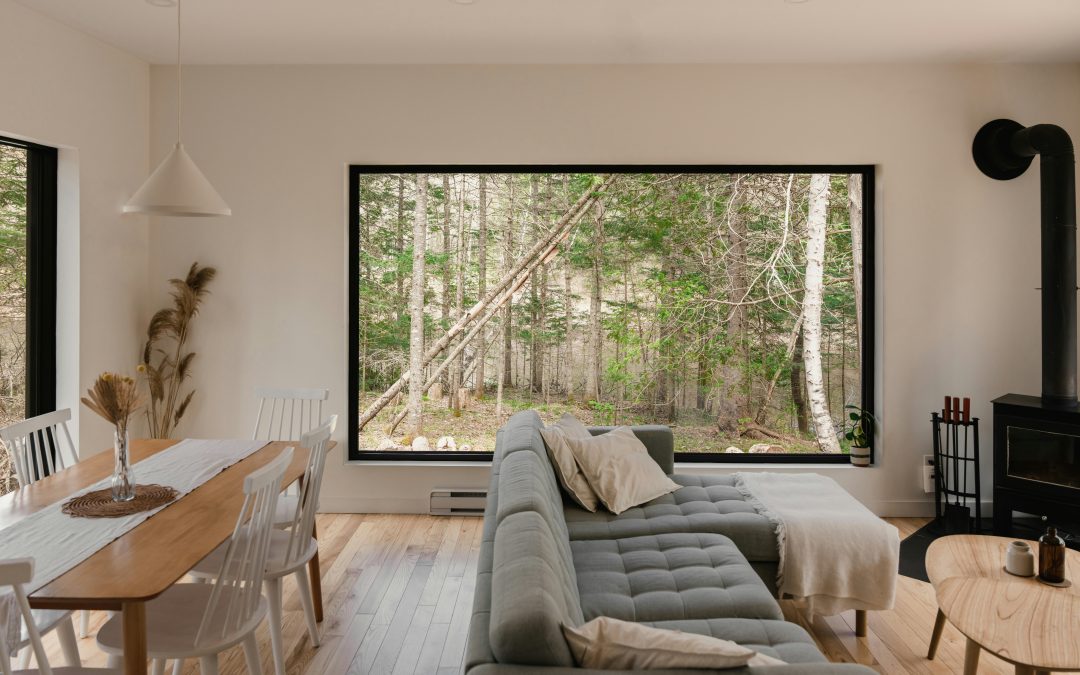Our homes should be comfortable spaces where we feel free and relaxed.
While it’s not necessarily something we often think about, the indoor air quality inside your home can impact your health.
The airtightness of your home directly correlates with indoor air quality and energy efficiency.
Air tightness is particularly relevant for properties in Australia. We experience severe summers and want to keep our homes cool.
Strong winds blow smoke from burn-offs and bushfires through our doors and windows. There’s traffic pollution to compete with, and high pollen counts during spring can set off allergies.
But there’s more to airtightness than simply stopping air from getting into or out of your home. Here’s what airtightness means and why it matters in your home construction.
Understanding Air Tightness
The concept of air tightness is a core pillar of passive house design. Air tightness means building a home that keeps air from moving in and out.
The building envelope includes the slab, roof, walls, doors and windows, and insulation. This design helps reduce unwanted airflow.
The key here is that it focuses on uncontrolled air movement. It’s not about simply closing a window; you control that.
Uncontrolled air leaks are often hard to notice. They can happen at unsealed edges around your doors and windows.
These small leakage points can let air escape. Unsealed vents or exhaust fans can let cool and warm air out. Gaps in the insulation in your roof or walls also allow air leakage.
For older homes with floorboards, tiny gaps between the boards are common culprits of air leakage.
These leaks mean outside pollutants can get in. This also means losing necessary heating and cooling, making your air conditioning or heater work harder.
How to Check for Air Tightness
Understanding the airtightness of your home is crucial for improving its efficiency and sustainability. While some gaps and leakage points may be noticeable, tests can determine the airtightness of your home. Qualified technicians can perform these tests for you.
The most common of these is a blower door test. In this test, investigators place a specially designed wrap with a high-powered fan over an external door.
This measures airflow into or out of your home, identifying how much air is removed to keep the air pressure difference at an even 50 pascals.
Tests can also be undertaken with an infrared camera to identify where heat enters or exits a home or using smoke to identify leakage points.
The Importance of Airtightness for Energy Efficiency
Improving the airtightness of your home helps to optimise its energy efficiency.
You can keep a more consistent temperature inside by reducing the uncontrolled air that exits or enters your home. This allows you to keep your home cooler or warmer and reduce how long you run your heating and cooling systems.
It’s a massive benefit during Australia’s hot summers, helping you reduce your reliance on air conditioning during those 40-degree days.
It also helps to stop unwanted heat loss during cold spells over winter. You can keep more warm air inside your home, meaning you run the heater less.
This all helps to reduce your environmental footprint while lowering your power bill.
Airtight House Construction Creates More Comfortable Homes
In addition to improving energy efficiency, the airtightness of your home can create a more comfortable space inside.
Eliminating air leaks allows you to keep a more consistent temperature indoors. It improves thermal comfort—no more unexplained hot or cold spots around the house.
Airtight building helps to improve condensation and moisture control. Without air leaks, less moisture can get inside, reducing the chance of condensation and working to stifle mould growth.
It also improves noise control. An airtight home reduces the external noise entering the house from the outside, whether environmental, the sound of passing vehicles, or noisy neighbours.
Improving Air Quality
The airtightness of your home directly impacts the quality of the air you enjoy inside. It allows you to control your breathing, as fewer outside contaminants like dust, pollen, smoke, or pollution enter the outdoor air.
Homes built on passive house principles employ controlled ventilation systems. A heat recovery ventilation system (HRV) maintains fresh air inside the home.
An HRV is a ducted fan system that draws in air from outside the home, passing it through filters to remove pollutants. At the same time, air from inside the home is extracted and blown outside. This air runs through a heat exchanger that transfers warmth from this air to the new air entering the house.
These systems are extremely energy efficient. They help reduce energy use, limit reliance on heaters and air conditioning, and keep your house at a more stable, comfortable temperature.
Heat recovery ventilators (HRVs) and Energy Recovery Ventilation (ERV) systems work similarly, recovering moisture from the outgoing air and adding it back to the fresh air entering the home. This helps ensure the air in your home doesn’t get too dry.
Airtightness is an Investment in Your Home’s Future
Optimising the airtightness of your new home construction is a great way to control energy use and costs while reducing your emissions impact on the environment.
Airtight home construction also means your house will last longer. It reduces any chance of moisture and condensation build-up, limiting mould growth that can damage structures. It helps to reduce wear on HVAC systems, ensuring they last longer and cutting down costs on repairs over time.
It’s a clever way to keep your house healthier for longer.
Build an Airtight Home That Stands the Test of Time
We are committed to building high-performance homes designed with the principles of passive house construction.
Our Passive home construction helps to optimise indoor air quality, improving your build’s comfort, efficiency, and sustainability.
Get in touch to discuss how we can incorporate airtight building solutions into your new home build.

